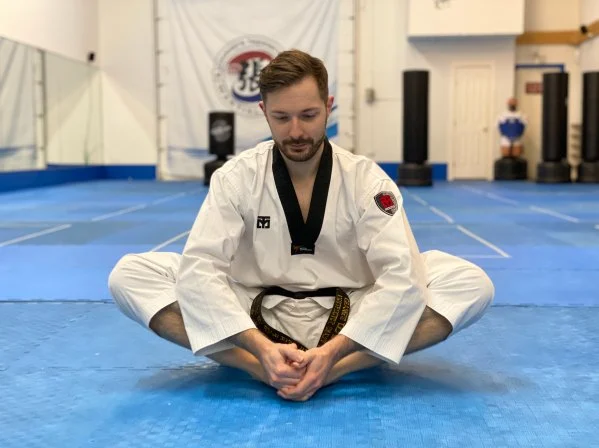
- Understanding Muscle Cramps in Tae Kwon Do
- Common Causes of Muscle Cramps
- Prevention Strategies for Tae Kwon Do Practice
- Real-Life Example: Muscle Cramp Prevention in Action
- Tips for Staying Cramp-Free During Practice
Understanding Muscle Cramps in Tae Kwon Do
Muscle cramps are a common issue that many martial artists face, especially during intense practices like Tae Kwon Do. These cramps can be incredibly painful and disruptive, affecting performance and training progression. Muscle cramps occur when a muscle involuntarily contracts and doesn't relax, often leading to sharp, sudden pain. In martial arts like Tae Kwon Do, where explosive movements, kicks, and stances are key components, cramping can become an obstacle to improving technique and endurance.
Whether you're a beginner or an experienced practitioner, understanding why cramps happen and how to prevent them is crucial for maintaining your training schedule and overall performance. In this article, we’ll dive into the common causes of muscle cramps during Tae Kwon Do practice and offer strategies to keep them at bay, helping you train harder, longer, and more efficiently.

United Martial Arts Centers Warwick / umac warwick ny
43 West St, Warwick, NY 10990, USA
Common Causes of Muscle Cramps
Muscle cramps can occur for a variety of reasons during Tae Kwon Do practice, often related to physical exertion, environmental conditions, and even your body’s nutritional state. Here are the most common causes:
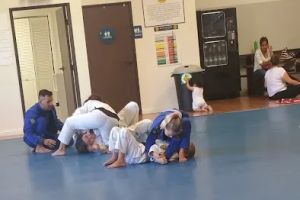
Gracie Humaita Hemet / gracie humaita hemet
HemetRiverside CountyCalifornia
2164 E Florida Ave, Hemet, CA 92544, USA
1. Dehydration
One of the leading causes of muscle cramps is dehydration. When your body lacks sufficient fluids, your muscles may not function properly, leading to spasms. Dehydration is especially common during intense training sessions, where you sweat more and lose electrolytes. In Tae Kwon Do, where high-impact kicks and quick footwork are involved, dehydration can significantly increase the risk of cramping.
2. Electrolyte Imbalance
Electrolytes like sodium, potassium, and magnesium play a crucial role in muscle function. An imbalance in these minerals, often due to excessive sweating or inadequate nutrition, can lead to muscle cramps. During Tae Kwon Do practice, your body loses electrolytes through sweat, so replenishing them through food or supplements is essential to prevent cramps.
3. Inadequate Warm-Up or Stretching
Skipping a proper warm-up or stretching routine can increase the likelihood of muscle cramps. Cold muscles are more prone to injury and cramps, especially when performing explosive movements like high kicks, jumping, and rapid changes of direction. Without proper stretching, the muscles may not be prepared for the intense physical demands of Tae Kwon Do.
4. Overuse and Fatigue
Overexerting your muscles, whether from prolonged practice or pushing yourself too hard, can lead to fatigue. Tired muscles are more likely to cramp, as they struggle to maintain function and endurance. Training too intensely without adequate recovery time can also contribute to muscle fatigue and cramping during subsequent sessions.
Prevention Strategies for Tae Kwon Do Practice
There are several strategies you can incorporate into your training routine to help prevent muscle cramps and keep your muscles performing at their best during Tae Kwon Do practice. By addressing hydration, nutrition, stretching, and recovery, you can reduce the chances of cramps interfering with your training.
1. Stay Hydrated
Proper hydration is one of the most effective ways to prevent muscle cramps. Make sure to drink plenty of water throughout the day, especially before, during, and after your Tae Kwon Do practice. For longer sessions or in hot conditions, consider drinking sports drinks that replenish electrolytes lost through sweat. Aim for at least 8-10 cups of water daily, and increase your intake during intense practice days.
2. Eat a Balanced Diet
Maintaining a diet rich in essential minerals is key to preventing cramps. Focus on eating potassium-rich foods like bananas, sweet potatoes, and spinach, as well as magnesium-rich foods such as almonds and avocado. These nutrients help maintain muscle function and reduce the likelihood of cramps. If you engage in intense training, you may also want to consider taking an electrolyte supplement to maintain balance.
3. Incorporate Proper Warm-Up and Stretching
A proper warm-up and stretching routine is vital for preparing your muscles for the intense movements of Tae Kwon Do. Spend 10-15 minutes before each practice session warming up with dynamic stretches and exercises that activate your muscles, such as leg swings and hip rotations. Follow this with static stretching to improve flexibility and reduce muscle tension. Pay special attention to the hamstrings, quads, calves, and hip flexors, as these muscles are heavily involved in Tae Kwon Do movements.
4. Listen to Your Body and Rest
Overtraining can lead to muscle fatigue and cramping. It’s important to listen to your body and rest when needed. If you feel overly tired or experience muscle soreness during or after training, take a break and allow your muscles time to recover. Proper rest helps prevent fatigue, which is a key factor in muscle cramps.
5. Use Compression and Massage
If you feel a cramp coming on during training, consider using compression garments, like compression socks or sleeves, to support your muscles. Gentle massage after practice can also help reduce muscle tightness and promote circulation, helping to prevent cramps in the future.
Real-Life Example: Muscle Cramp Prevention in Action
Take the case of Matt, a dedicated Tae Kwon Do practitioner who struggled with frequent muscle cramps during his training sessions. After speaking with his coach and researching muscle cramp prevention, Matt implemented several changes into his routine. He began hydrating more consistently, incorporating potassium-rich foods like bananas into his diet, and committing to a thorough warm-up and stretching routine before each class.
As a result, Matt noticed a significant reduction in his cramps. He also learned to listen to his body and take rest days when he felt fatigue setting in. Over time, his performance improved, and he felt more energized during his training sessions. Matt’s story highlights how taking proactive steps to prevent muscle cramps can greatly enhance both performance and overall well-being.
Tips for Staying Cramp-Free During Practice
If you want to stay cramp-free during your Tae Kwon Do practice, here are some practical tips to keep in mind:
1. Maintain Consistent Hydration
Always have a water bottle handy during training, and take small sips throughout your session to stay hydrated. This will keep your muscles performing optimally and reduce the risk of cramps.
2. Avoid Heavy Meals Before Training
Avoid consuming large meals right before practice, as they can divert blood flow to your digestive system, leading to muscle fatigue. Instead, eat a light snack, such as a piece of fruit or a handful of nuts, about 30-45 minutes before practice.
3. Incorporate Recovery Time
Make sure to give your muscles enough time to recover after intense sessions. Stretch, foam roll, and allow your body time to rest before your next practice. Recovery is just as important as training itself when it comes to preventing injuries like muscle cramps.
4. Wear Proper Footwear
Wearing shoes with proper arch support and cushioning can reduce muscle strain, particularly in your legs and feet. Well-fitting shoes help maintain your balance and prevent unnecessary stress on your muscles during jumps, kicks, and stances.
By following these tips, you can help prevent muscle cramps and ensure a more comfortable, effective Tae Kwon Do practice.

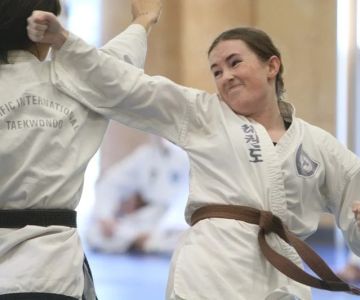


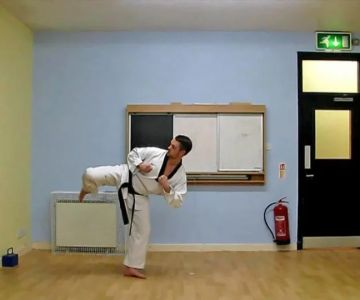
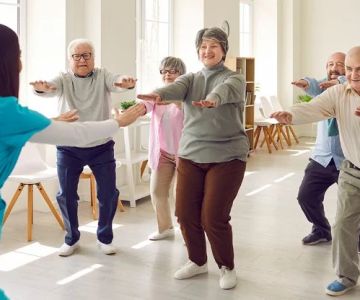
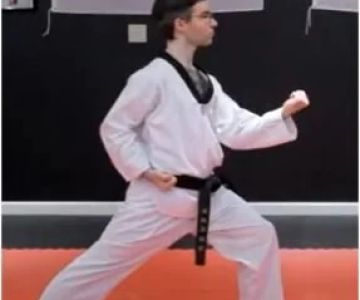
 TKO Martialarts Academy0.0 (0 reviews)
TKO Martialarts Academy0.0 (0 reviews)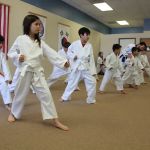 Center for Martial Arts4.0 (8 reviews)
Center for Martial Arts4.0 (8 reviews) Kickin It Martial Arts Academy5.0 (12 reviews)
Kickin It Martial Arts Academy5.0 (12 reviews) Cho's Competitive TaeKwonDo5.0 (1 reviews)
Cho's Competitive TaeKwonDo5.0 (1 reviews) Carlson Gracie Oklahoma5.0 (4 reviews)
Carlson Gracie Oklahoma5.0 (4 reviews) Morristown Taekwon-Do5.0 (10 reviews)
Morristown Taekwon-Do5.0 (10 reviews)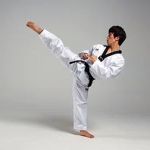 How to Execute a Jumping Roundhouse Kick to the Head
How to Execute a Jumping Roundhouse Kick to the Head How to Execute a Double Kick Combination in Sparring
How to Execute a Double Kick Combination in Sparring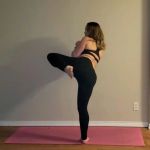 How to Perform a Flawless Axe Kick: A Step-by-Step Guide
How to Perform a Flawless Axe Kick: A Step-by-Step Guide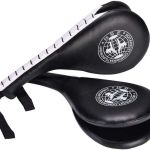 DIY Tae Kwon Do Training Equipment for Home Practice
DIY Tae Kwon Do Training Equipment for Home Practice How to Increase Your Vertical Jump for Tae Kwon Do Flying Kicks
How to Increase Your Vertical Jump for Tae Kwon Do Flying Kicks The History of the Tae Kwon Do Peace Corps
The History of the Tae Kwon Do Peace Corps